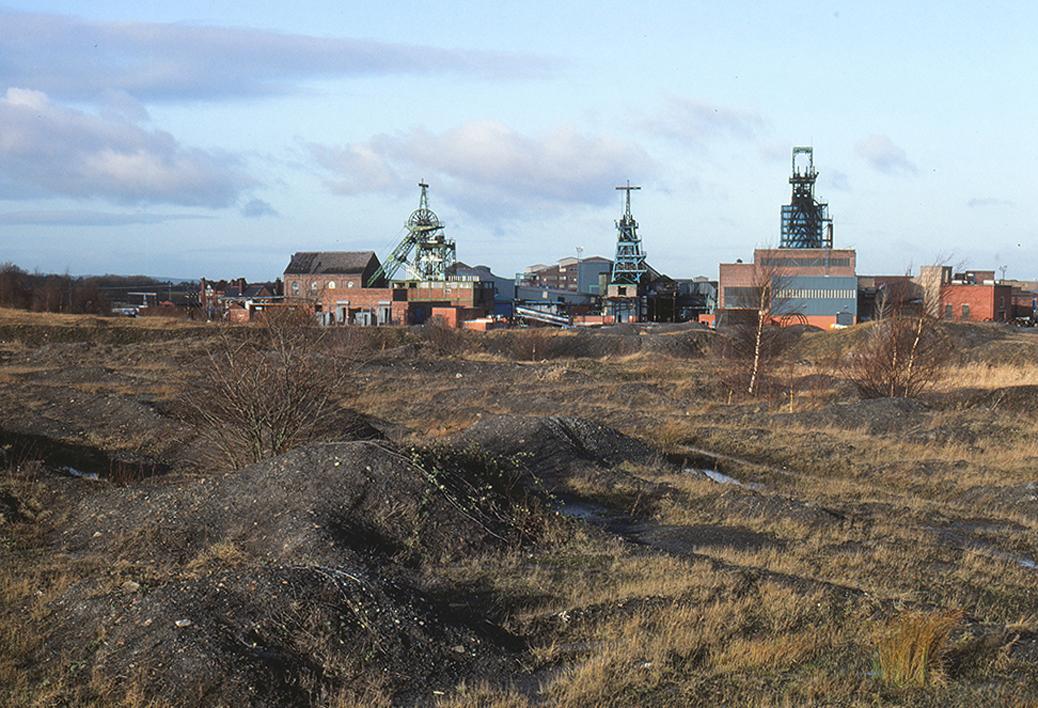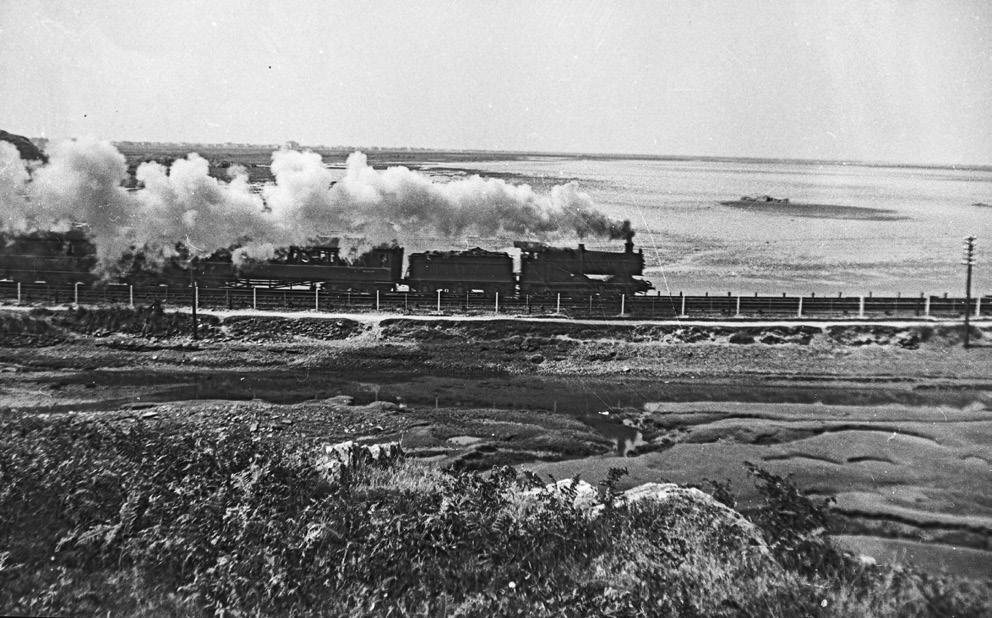
7 minute read
Gwil’s rant
Chair of the Archaeology and Heritage Group. GWIL OWEN ARPS.
In the last issue of the journal I was able announce the exhibition of our members’ work next autumn - September 13th to 27th to be exact. Enclosed with this journal you will find a letter giving all the nitty gritty details for submissions - prints, dates, sizes and suchlike. Here, though are the basics. The venue is the Michaelhouse cafe, attached to Michaelhouse church in the centre of Cambridge, which is a well established venue for art exhibitions. Our basic premise is that the exhibition will show as broad a spectrum of members’ work as possible - not just of those who are already great and good, but for beginners and “improvers” alike. With this in mind I hope that we shall be oversubscribed, in which case selection will be based on the variety of A&H work as much as on absolute excellence. Credits will be by forename name and surname only; no gongs or letters attached. I urge you all to put something into the exhibition. If you are diffident about your work, remember that we have a core of members who are more than able and willing to offer advice - so please talk to me or any of our committee. More generally the group’s main problem continues; that few members are active participants in our events. The members’ showcase is a case in point - a few regulars, the presenters and the odd first timer. Offering some hope is the way the RPS is itself evolving, promoting closer contacts between regions and groups. This has been going on for some time within the south and east of Britain, which is our key demographic area. I have, myself, managed to discuss this with my local regional chairman, with a view to joint activities. Your other committee members, too, pursue a similar line in their own localities. Now for my other regular beef - we need more committee members. This issue will be my last chance to remind you, again, before the AGM in March. Currently our committee is five. In March it will be three. This will be perilously close to the group becoming unable to continue. In particular we must elect a new treasurer. I’m sure there are many members who can offer the skills a committee needs. The commitment is not onerous - three committee meetings a year, the AGM, and the ability to sing our praises in your own area, geographical and/or interest based. Get in touch. The shortest day has only just passed as I write this. Many of us will have put away our cameras, except for the odd foray around the family at Christmas - unless, of course you holiday in the Bahamas or Zermatt! Here is a thought to pursue. We do not just take photos - we make pictures. You don’t need a camera to make pictures - they are made in your head, whether or not you have a camera with you. I have several pictures in my head which I have yet to make. One is because I’m fascinated by the pollinating insects in our local botanic gardens. I have many close up images of insects on flowers - but not my key one where the insect is “just coming round the corner and staring directly into the camera”. It’s in my head. One day, maybe. Of course the best photo I ever took is also permanently in my head. I was thirteen, an avid train spotter, with a new roll film camera and Trains Illustrated as my photographic bible. I wanted the archetypical “steam engine bursting out of the tunnel” picture. I set up by our local tunnel exit, the engine burst out, and I nailed it! Unfortunately, when I developed the film, in my enthusiasm I forgot to put the fixer in before I opened the tank. What a klutz! I have never seen my best ever picture, but, like the insect, it’s always with me.
Train in landscape. Kodak Brownie127. Gwil. c. 11 years old.
Here’s a suggestion then. Go for a photographic walk, but leave the camera at home. Take a notebook and a pen. When you “see” a picture, write it down - shape, lighting, viewpoint, timing (not the shutter, silly), and most importantly why you want to take it. Not just because it’s nice, but why it appeals to you, what are its salient features, and how can you make that clear to someone else. You may end up only with a notebook full of imaginary pictures - but you will still be a photographer! Happy new year!, Gwil. Just email me: heritagechair@rps.org.
Island Stones No visit to the Outer Hebrides would be complete without a visit to the stone
circle at Calanais. Sitting astride a dominating ridge, it offers a commanding
view of landscape in every direction. JIM SOUPER ARPS
The tones and textures of the stones and how different they look in varying light conditions, make them a great subject for photography. They are, however, only the tip of the iceberg; Calanais sits at the heart of what has been described as ‘one of the largest ritual landscapes in Britain’. My own exploration of the archaeology and heritage of the Outer Hebrides began on North Uist, where I took part in an Art and Archaeology Summer School run by the University of the Highlands and Islands. Inspired by the summer school and with the help guidebooks produced by the Hebrides Archaeological Interpretation programme, I chose to navigate the rest of my time on the islands by their archaeology. Most of the images I made on this first visit were of the more imposing standing stones and stone circles. My compositions were, for the most part, made to emphasize the stones and to exclude more recent construction. During my two subsequent visits to the Outer Hebrides I have approached things differently. This was prompted in part by feedback from a 2017 exhibition, where two images in particular were remarked upon as being the more interesting and compelling. These were images of the standing stone at Breibhig (on Barra), which included a relatively recent stone hut, and another of the Iron Age remains at Cleitreabhal Deas with modern communication masts in the background. Throughout the islands ancient Neolithic, Iron Age and Bronze Age remains lie beside the marks left on the landscape by later inhabitants of the islands. These layers of history have become my main focus.
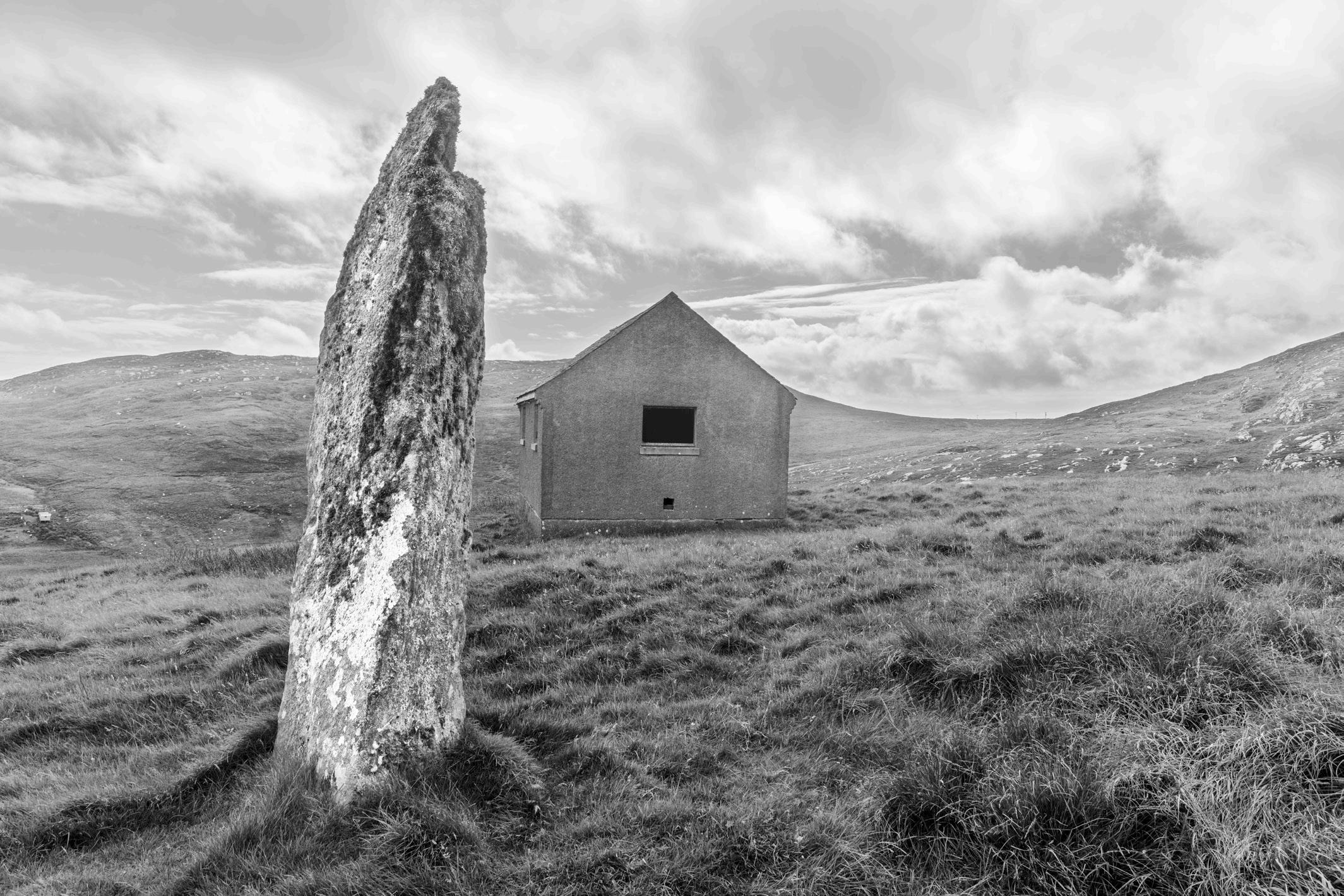
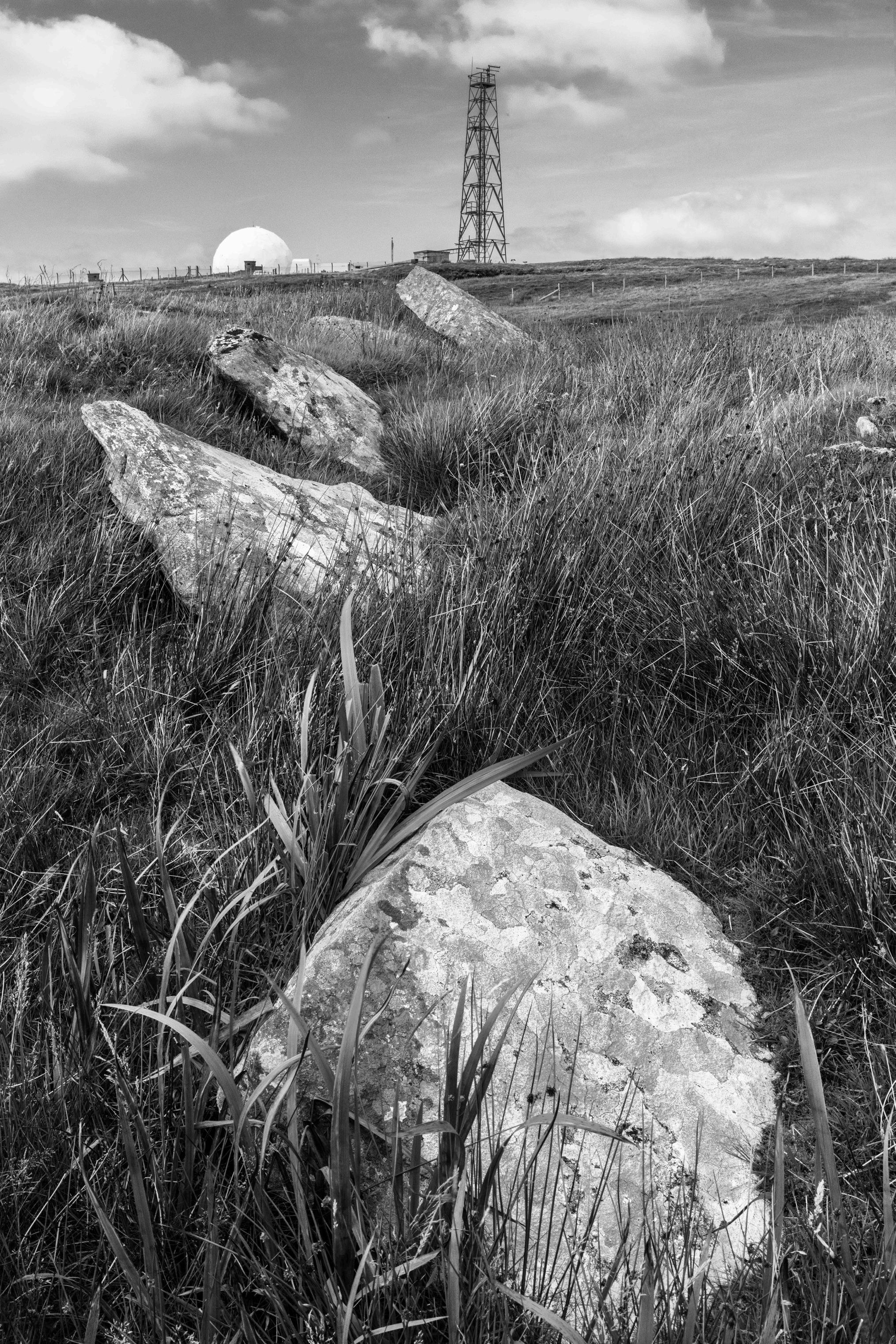
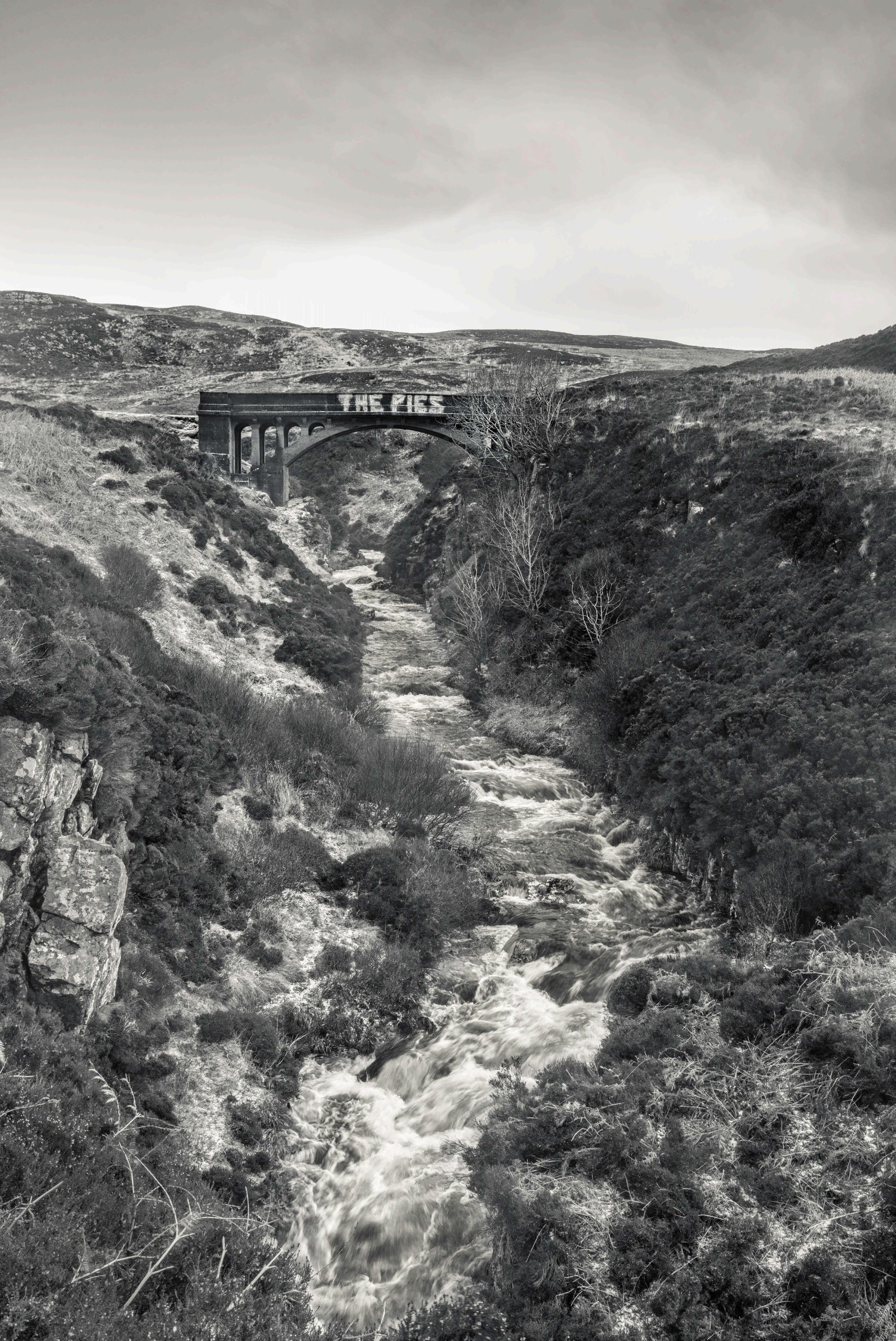
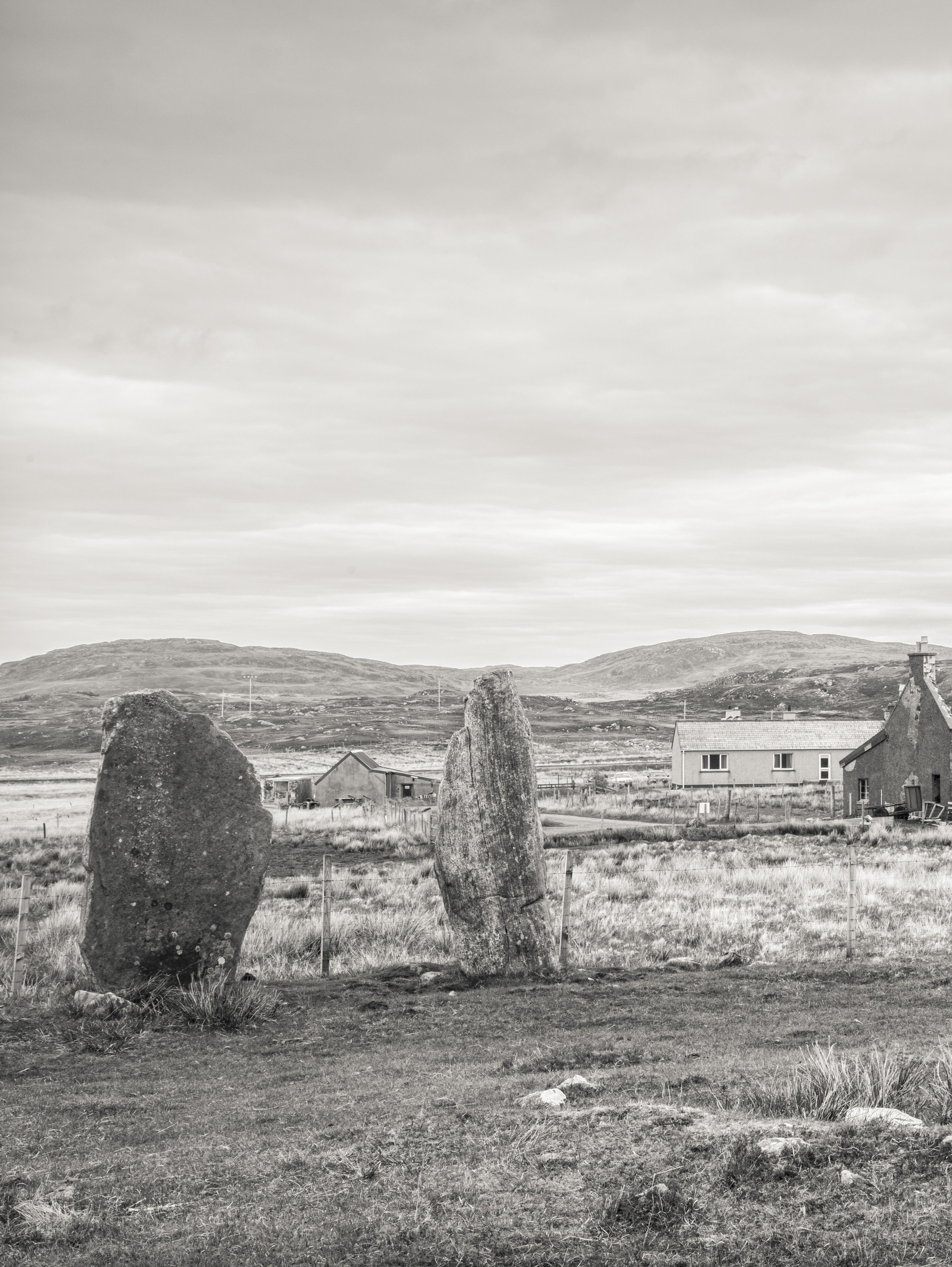
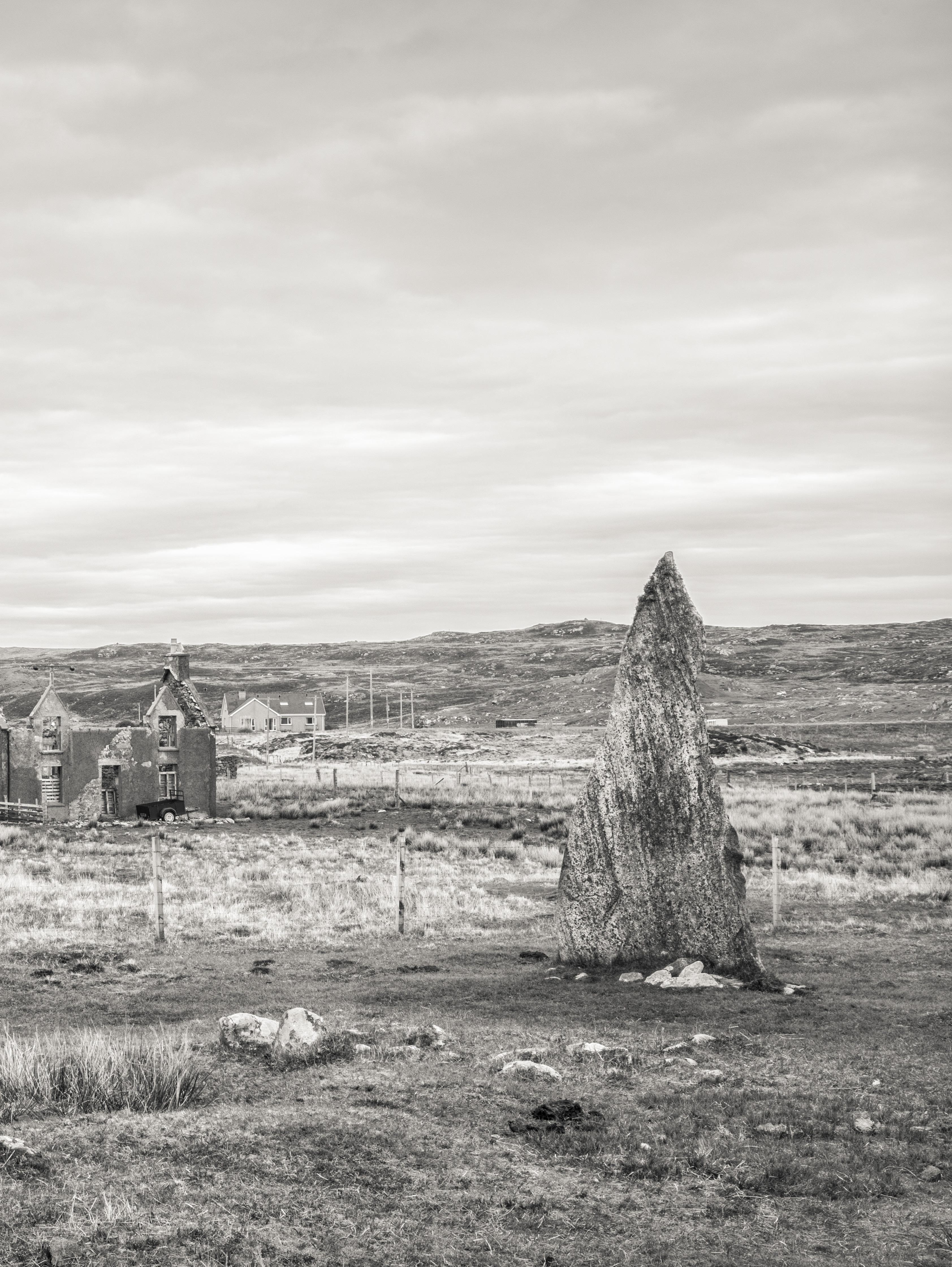
Cleitir (Calanais VIII), Great Bernera, May 2018. This unusual semi-circle of stones stands over-looking the Bernera bridge, built to link the island to Lewis in the 1950s.

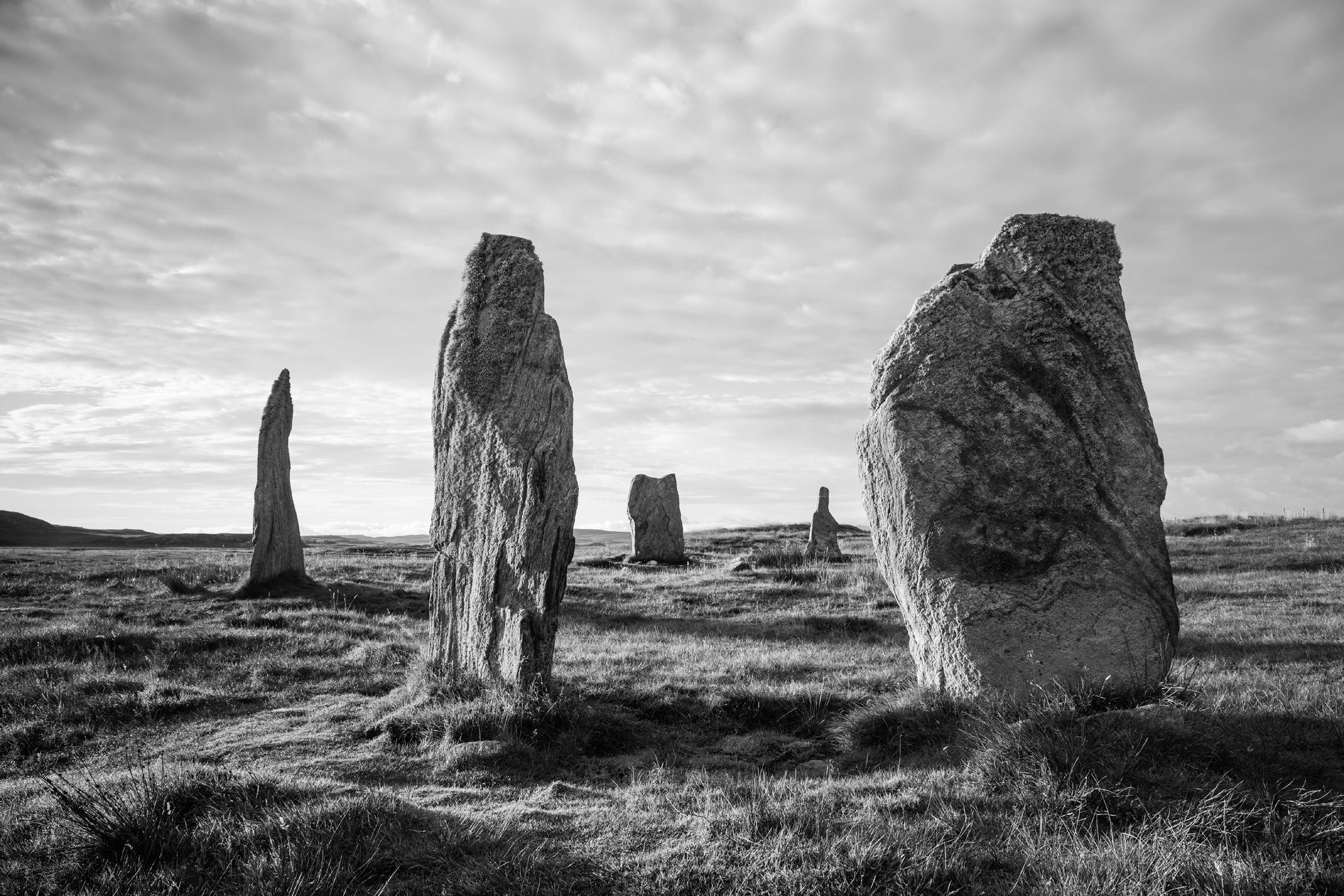
Cnoc Ceann a’ Ghàrraidh, Lewis, August 2016. Also known as Callanish II, this smaller stone circle is one of a number that lie close to the main Callanish stone circle.
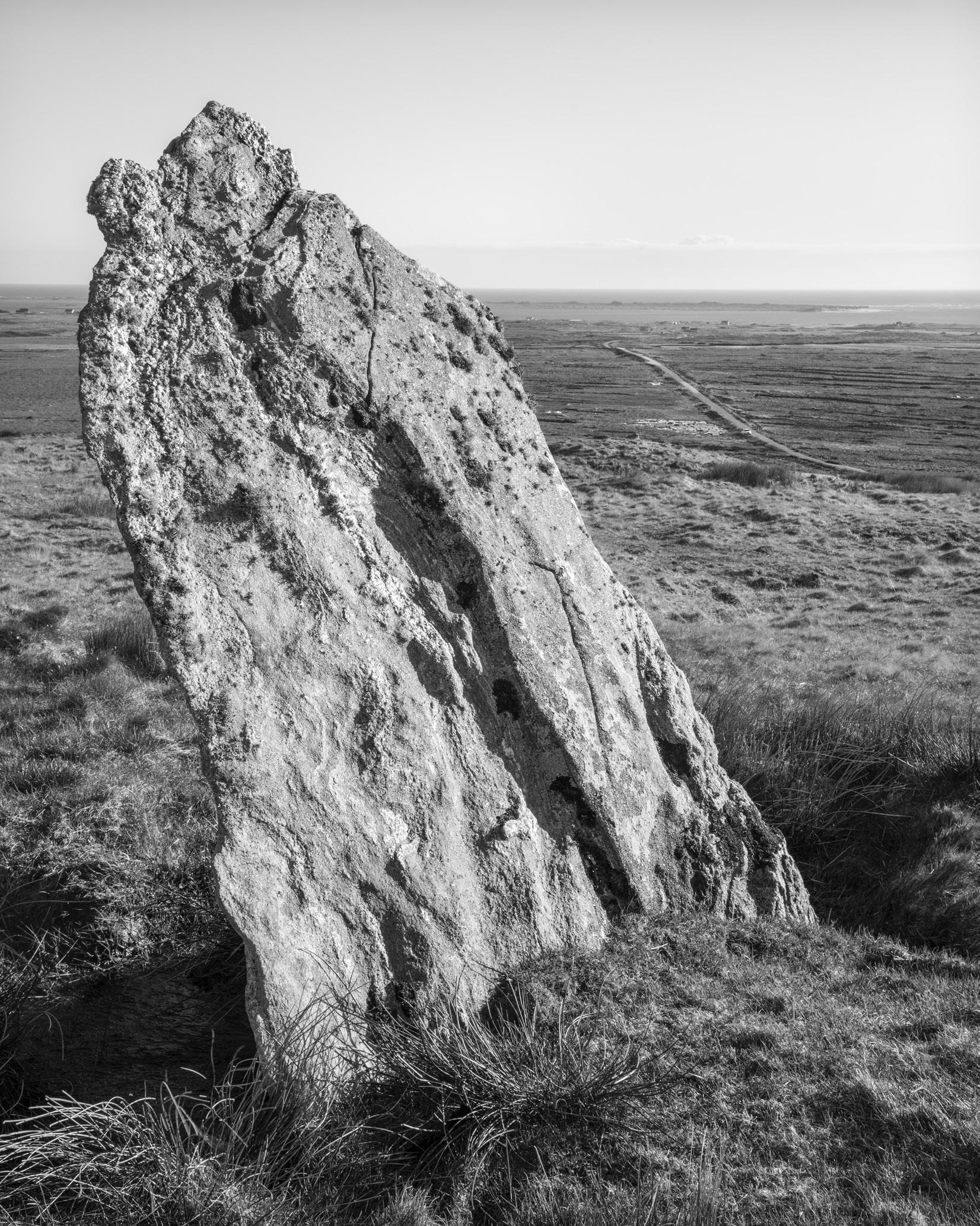
Beainn a’Charra, North Uist, May 2018. The ‘committee road’, in the distance to the right of this 2.8 metre standing stone, was built to provide work during the 1840’s potato famine.
I have often sought to juxtapose the Neolithic with the modern. Compare the image I made at Cnoc Ceann a’ Ghàrraidh in 2018, with dilapidated buildings in the background, with the one I made on my first visit in 2016, for example. Elsewhere, many stones and stone circles now lie within the boundaries of working crofts and I have sought to embrace this in the composition of my photographs. The most extreme juxtaposition of the ancient and modern I have found, is the standing stone at Stonefield which stands, on its original site, adjacent to a 1960’s housing development in Breasclete. After three visits to the Outer Hebrides there is still much to discover. There are sites I have yet to find and others where I feel I can make a better image. I am also keen to study the history of the islands in greater depth. I look forward to my next visit!
Additional Information The images I exhibited in February 2017 can be viewed at: https://www.jimsouper.co.uk/v/ photos/72558nrx/island-stones I have used a number of websites to help my research. These include: https://www.megalithic.co.uk https://www.ancient-scotland.co.uk
https://www.themodernantiquarian.com JIM SOUPER ARPS






